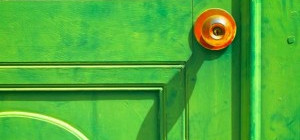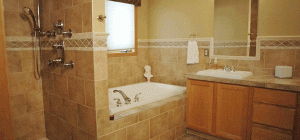Potlights can be an integral part of bringing an interior decor to life. But they need to be carefully considered if you are to get the most from them in either a practical or aesthetic sense. Below we’re going to take a look at some basic principles that should guide you when considering potlights for your home. But first a simple question.

What’s so Great About Potlights?
There are countless lighting options available to the homeowner today. What makes potlights so special? Several things actually. First, if done right they provide sophisticated and discrete lighting effects that simply aren’t achievable any other way. Second, they’re great for creating focal points and third, they can make an average sized room feel more spacious than it is.
Now that we have a better idea what makes potlights so special let’s look at some baseline principles to keep in mind when deploying them in your home.
Positioning Potlights
While different rooms in different houses will have different characteristics the basic principles of potlight deployment go something like this:
- Don’t place them too close together or install lines of them down the centre of the room. Potlights are about creating atmosphere and carving space out of darkness, not about lighting your home like an operating theatre.
- When trying to determine the proper spacing of your lights you can use this general rule: take the diameter of the potlight and change inches to feet to get the spacing. So, 2 inch diameter potlights should be at least 2 feet apart and 4 inch potlights at least 4 feet apart etc.
- Make sure any potlights used to highlight specific objects are properly centred above that object and that they are 12 to 18 inches back from the object they’re going to light.
- You can use potlights to create the illusion of a larger space. Do this by installing potlights around the perimeter of the room so that, when switched on, their light “washes” the wall beneath them. This will make the wall seem farther away than it is, which will make the room feel larger.
Choosing the Right Potlights
- Size – Potlights are available in a variety of sizes that roughly equate to 2, 4, 5 or 6 inches in diameter. The largest of these will not be appropriate in most living spaces and are generally employed in tall entryways or in other spaces with cathedral ceilings. The rest can be used in living rooms and kitchens etc with a general rule being the smaller the space the smaller the diameter.
- Direction – “Eyeball” fixtures are typically used to highlight artwork or otherwise create focal points. Potlights that swivel allow you greater leeway in regards to where you can apply the light. They’re a good choice if you rearrange often. While static potlights are typically employed for the purposes of “wall washing”.

The Different Types of Bulbs for Potlights
In recent years the lightbulb landscape has changed significantly, impacting all manner of light fixtures including potlights. The following are the most common types of bulbs for potlights in use today.
- Incandescent – Incandescent bulbs, once the industry standard, are quickly becoming obsolete. Many existing potlights still use them but once the last of the incandescents burn out these fixtures will have to be retrofitted with…
- LEDs – LEDs or Light Emitting Diodes represent nothing short of a revolution in lighting. They use a tiny fraction of the energy of incandescents, produce a cleaner light and last for 20 years and sometimes more.
- CFLs – CFLs or Compact Fluorescents are the second wave of the lighting revolution. They too are hyper efficient (though not as efficient as LEDs) and long lasting (again, not as long lasting as LEDs).
- Halogen – There was a time when it was expected halogen bulbs would replace incandescents. The advent of LED and CFL technology put an end to that idea. Still halogen bulbs offer clean, clear light and many potlights today still use them.
A Word of Caution
Always get advice from a qualified electrician Like Hotwire-Electric or a lighting expert before deciding what type of potlights and how many to install in your home. Your circumstances may call for special wiring or housings for your potlights. Also, don’t try and install potlights yourself unless you have some level of experience doing so. Otherwise you’re asking for trouble.




![Are You a Secret Hoarder? [Infographic]](https://lerablog.org/wp-content/plugins/wp-thumbie/timthumb.php?src=http://lerablog.org/wp-content/uploads/2014/11/Nation-of-Clutter-IG-v21.png&w=300&h=140&zc=1)


